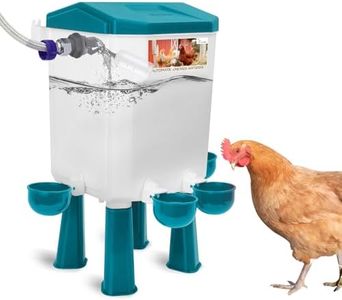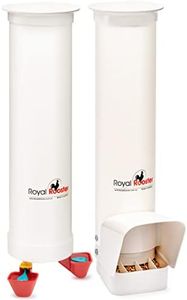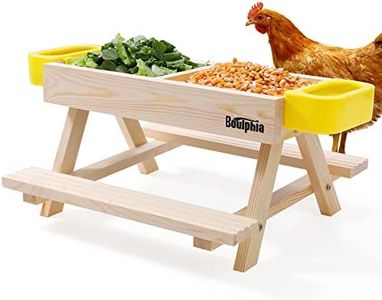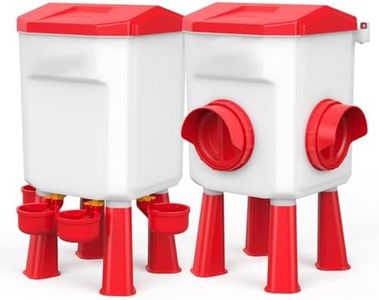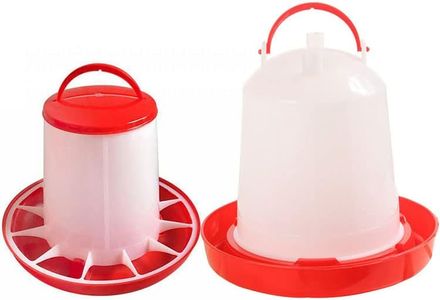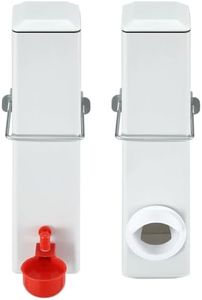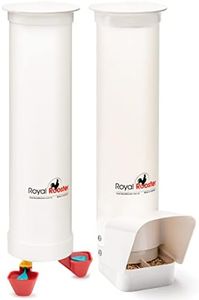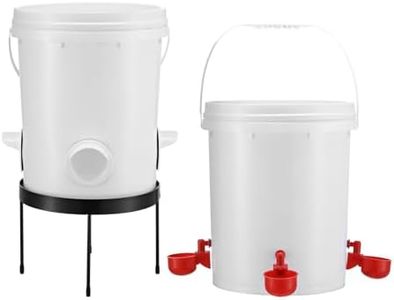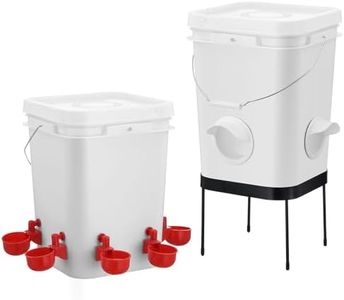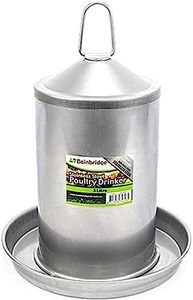We Use CookiesWe use cookies to enhance the security, performance,
functionality and for analytical and promotional activities. By continuing to browse this site you
are agreeing to our privacy policy
10 Best Chicken Waterers
From leading brands and best sellers available on the web.Buying Guide for the Best Chicken Waterers
Picking the right chicken waterer is essential for keeping your flock hydrated, healthy, and comfortable. A good waterer will ensure your chickens always have access to clean water, reduce spillage, minimize maintenance, and suit the needs of your flock size and coop setup. When choosing, focus on practicality and convenience so your daily chores become easier and your chickens’ well-being is improved.CapacityCapacity is the amount of water the waterer can hold. This is important because it determines how often you will need to refill it, which impacts maintenance time. Small waterers (1-2 gallons) are suitable for a few chickens or small coops where space is tight, while medium (2-5 gallons) to large waterers (more than 5 gallons) are better for bigger flocks or those who want less frequent refills. Consider how many chickens you have and how long you want the waterer to last before needing attention—generally, each chicken drinks about a pint of water per day, so plan accordingly.
MaterialChicken waterers are most commonly made from plastic or metal. Plastic waterers are lightweight, affordable, and resistant to rust or corrosion, making them easy to clean and move. Metal waterers, usually galvanized steel, are sturdier and better for outdoor use or rough environments, but they can rust over time if not cared for and may become hot in direct sunlight. Choose plastic for ease and lighter handling, especially in milder climates, but go for metal if you need more durability or have a larger, active flock.
Type (Gravity vs. Automatic/Nipple)There are several types of waterers, mainly gravity-fed and automatic (including nipple drinkers and cup-style). Gravity-fed waterers use a simple design where water flows out as chickens drink, making them very easy to set up and reliable, ideal for beginners. Automatic or nipple waterers require connection to a water source or periodic filling, but provide cleaner water by limiting contamination. Nipples or cups also reduce the risk of spillage. Choose gravity-fed for simplicity and ease, but look at automatic or nipple styles if you want a more hygienic option and are comfortable with a little extra installation setup.
Refill MethodThe way you fill a waterer can make your chores easier or more cumbersome. Some waterers are refilled from the top with a screw-on lid, others need flipping over or unscrewing to refill. Top-fill models are more convenient because you don’t have to invert a heavy, full container. If you value quick, mess-free refills, especially with larger waterers, look for top-fill options.
Ease of CleaningA waterer's design impacts how easy it is to clean, which is important for your chickens' health. Simpler designs with wider openings and fewer seams or crevices are much easier to wash and scrub. Some waterers can be taken apart for a thorough clean, while others can be tricky if they have tight spaces where algae or dirt can build up. Pick a waterer that you can easily access and clean completely, especially if you’re in a warm climate where algae can grow quickly.
Placement and Weather SuitabilityConsider whether the waterer will be indoors, outdoors, or both, as well as your climate. Outdoor waterers may need to be UV-resistant if plastic, or rust-resistant for metal. In colder climates, you might look for heated waterers or those that can be fitted with a heater to prevent freezing. If your area is very hot, choose materials and colors that don’t heat the water excessively or place the waterer in the shade. Think about where you'll position it and how the weather might affect water quality and availability.
